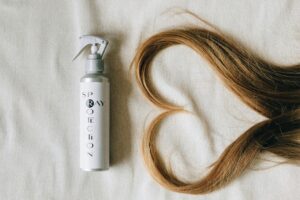Creating your own eyeliner and mascara diy has numerous benefits, including control over the ingredients, customization, and cost-effectiveness. Homemade products eliminate harmful chemicals often found in commercial cosmetics, reducing the risk of irritation and allergies. You can customize the color, consistency, and formula to suit your preferences and skin type. Additionally, making your own makeup can be more economical in the long run, as many natural ingredients are affordable and can be used in multiple recipes. Embracing DIY cosmetics also promotes sustainability by reducing packaging waste and encouraging the use of eco-friendly materials.
Essential Ingredients and Tools
To start making your own eyeliner and mascara, gather essential ingredients such as activated charcoal, cocoa powder, beeswax, and natural oils like coconut oil. Tools include small mixing bowls, brushes, a double boiler, and empty mascara tubes or small jars for storage. Having these basic items on hand will streamline the process, making it easy to create your personalized makeup.
Homemade Eyeliner

Types of Eyeliner to Make
When making homemade eyeliner, you can choose between various types, including gel, liquid, and pencil. Gel eyeliners are creamy and easy to apply with a brush, providing a smooth, intense line. Liquid eyeliners offer precise, sharp lines, ideal for dramatic looks. Pencil eyeliners, made from a blend of waxes and pigments, provide a softer, more natural finish. Deciding on the type of eyeliner to create depends on your desired look and application preferences.
Basic Eyeliner Recipe
A simple homemade eyeliner recipe involves mixing activated charcoal or cocoa powder with a binding agent like aloe vera gel or a few drops of water. Combine the ingredients in a small bowl until you achieve a smooth, paste-like consistency. Store the mixture in a small jar with a tight lid to prevent drying. This basic recipe can be customized by adding other natural ingredients for different colors and consistencies.
Natural Ingredients for Eyeliner
Activated Charcoal
Activated charcoal is a popular ingredient for homemade eyeliner due to its rich, black pigment and natural origins. It provides intense color and a smooth application, making it ideal for creating bold, dramatic looks. Activated charcoal is also safe for sensitive skin and free from harsh chemicals, reducing the risk of irritation.
Cocoa Powder
For a softer, more natural eyeliner, cocoa powder is an excellent choice. It offers a warm, brown hue perfect for daytime looks and those with lighter complexions. Cocoa powder is gentle on the skin and easy to blend, providing a subtle yet effective alternative to black eyeliner.
Aloe Vera Gel
Aloe vera gel is a versatile ingredient that acts as a binding agent in homemade eyeliner recipes. It ensures a smooth, even application and helps the eyeliner adhere to the skin without smudging. Aloe vera is also soothing and hydrating, making it suitable for sensitive eye areas.
Customizing Your Eyeliner

Adding Color: Mica Powders
Mica powders are a fantastic way to add color to your homemade eyeliner. These natural mineral pigments come in various shades, allowing you to create custom colors to match your style. Add a small amount of mica powder to your basic eyeliner recipe, mixing well to achieve the desired shade. This customization lets you experiment with different looks, from subtle to bold.
Adjusting Consistency: Beeswax and Oils
Adjusting the consistency of your homemade eyeliner can be done by adding beeswax and natural oils. Beeswax provides a firmer texture, making the eyeliner easier to apply and longer-lasting. Natural oils like coconut or jojoba oil add smoothness and moisture, ensuring a creamy application. Experiment with different ratios to find the perfect consistency for your eyeliner.
Tips for Long-Lasting Eyeliner
To ensure your homemade eyeliner lasts all day, start by applying a primer or a light dusting of translucent powder on your eyelids. This helps absorb excess oil and provides a smooth base for the eyeliner. Using a setting spray or powder after application can also enhance the longevity of your eyeliner, keeping it intact and smudge-free.
Homemade Mascara
Basic Mascara Recipe
A basic homemade mascara recipe involves mixing activated charcoal or black iron oxide with a blend of oils, such as coconut or jojoba oil, and beeswax. Melt the beeswax and oils together using a double boiler, then stir in the pigment until well combined. Pour the mixture into a clean, empty mascara tube and let it cool. This simple recipe creates a natural mascara that enhances your lashes without harmful chemicals.
Waterproof Mascara Recipe
To create a waterproof version, add a small amount of bentonite clay to the basic mascara recipe. Bentonite clay helps the mascara adhere better to your lashes, providing water resistance. Ensure the mixture is well blended to prevent clumping. This waterproof mascara will withstand sweat, tears, and humidity, making it ideal for summer or special occasions.
Natural Ingredients for Mascara

Black Iron Oxide
Black iron oxide is a common ingredient in homemade mascara due to its intense black color and natural properties. It provides excellent coverage and volume to the lashes, creating a bold, dramatic look. Black iron oxide is also safe for sensitive eyes, making it a popular choice for DIY mascara.
Bentonite Clay
Bentonite clay adds thickness and volume to homemade mascara, helping it adhere to the lashes better. It also improves the mascara’s waterproof properties, ensuring it lasts longer without smudging. Bentonite clay is gentle on the eyes and beneficial for lash health, making it an excellent addition to your mascara recipe.
Coconut Oil and Shea Butter
Coconut oil and shea butter are nourishing ingredients that condition and strengthen the lashes. They provide a smooth, creamy texture to homemade mascara, ensuring easy application and a clump-free finish. These oils also help keep the lashes hydrated and healthy, promoting natural growth and preventing breakage.
Customizing Your Mascara
Adding Volume and Length
To add volume and length to your homemade mascara, incorporate ingredients like castor oil and aloe vera gel. Castor oil is known for its lash growth properties, while aloe vera gel adds thickness and shine. Combining these ingredients with your basic mascara recipe will enhance your lashes, giving them a fuller and longer appearance.
Tips for Clump-Free Application
For a clump-free application, ensure your mascara mixture is well-blended and not too thick. Use a clean mascara wand to apply the product, wiping off any excess before brushing through your lashes. Applying the mascara in thin, even layers allows for better control and prevents clumping.
Ensuring Smudge-Proof Wear
To make your homemade mascara smudge-proof, set it with a light dusting of translucent powder after application. This helps absorb any excess oil and keeps the mascara in place. Using a setting spray can also enhance the longevity and smudge-proof qualities of your mascara, ensuring it stays put throughout the day.
Storage and Shelf Life
Proper Storage Techniques
Store your homemade eyeliner and mascara in clean, airtight containers to prevent contamination and drying out. Keep them in a cool, dry place away from direct sunlight and moisture. Using small, opaque containers helps protect the products from light exposure, preserving their quality and effectiveness.
Shelf Life of Homemade Eyeliner and Mascara DIY
The shelf life of homemade eyeliner and mascara is typically shorter than commercial products, usually around three to six months. This is due to the absence of preservatives. Always check for changes in texture, smell, or color, which can indicate spoilage. Discard any products that show signs of mold or separation.
Signs of Spoilage
Signs of spoilage in homemade eyeliner and mascara include an unpleasant odor, change in color, or the presence of mold. If the consistency becomes too thick or watery, it may also indicate the product has gone bad. Regularly inspect your DIY cosmetics and replace them as needed to ensure they are safe for use.
Application Tips

Best Practices for Applying Eyeliner
For a precise eyeliner application, use a thin brush or a steady hand with a pencil. Start with a clean, dry eyelid and apply a primer to ensure the eyeliner adheres well. Apply the eyeliner in short, even strokes, building up the intensity gradually. Use a cotton swab to clean up any mistakes and achieve a sharp, clean line.
Techniques for Perfect Mascara Application
When applying mascara, start at the base of your lashes and wiggle the wand upwards to coat each lash evenly. Apply multiple thin layers rather than one thick coat to prevent clumping. For added volume, use a lash primer before applying mascara. Finish by combing through your lashes with a clean spoolie to separate and define them.
Removing Homemade Eye Makeup
Remove homemade eye makeup gently using natural oils like coconut or olive oil. Apply a small amount to a cotton pad and press it onto your closed eyelids for a few seconds before wiping away. This method effectively dissolves makeup without harsh rubbing, keeping your delicate eye area protected and moisturized.
Safety Considerations
Patch Testing for Allergies
Before using homemade eyeliner or mascara, conduct a patch test to check for any allergic reactions. Apply a small amount of the product to the inside of your wrist or behind your ear and wait 24 hours. If you experience any redness, itching, or irritation, do not use the product. Patch testing ensures your DIY cosmetics are safe for your skin.
Avoiding Eye Irritation
To avoid eye irritation, use high-quality, natural ingredients in your homemade cosmetics. Ensure all tools and containers are clean and sanitized before use. Avoid adding
essential oils or fragrances that may be too harsh for the delicate eye area. Always remove eye makeup thoroughly at the end of the day to prevent buildup and irritation.
Choosing Safe and Non-Toxic Ingredients
Choose safe, non-toxic ingredients for your DIY eyeliner and mascara by researching each component and its properties. Opt for organic, food-grade ingredients whenever possible. Avoid using artificial colors, preservatives, or any substances known to cause irritation or harm. Prioritizing safety in your ingredient selection ensures your homemade products are gentle and effective.
Frequently Asked Questions
Common Issues and Solutions
Common issues with homemade eyeliner and mascara include clumping, smudging, and short shelf life. To address clumping, ensure your mixture is smooth and well-blended. For smudging, set your makeup with powder or setting spray. Extend shelf life by storing products in cool, dark places and using clean tools. Regularly inspect and replace homemade cosmetics to maintain their effectiveness.
Tips for Beginners
For beginners, start with simple recipes and gradually experiment with different ingredients and techniques. Focus on achieving the right consistency and color before moving on to more complex customizations. Follow tutorials and guides to understand the basics of DIY makeup. Patience and practice are key to mastering homemade eyeliner and mascara.
Advanced Techniques
Advanced techniques for creating homemade eyeliner and mascara include adding natural fibers for lengthening effects and using different types of waxes for varied textures. Experiment with layering pigments to achieve unique colors and finishes. Researching advanced cosmetic formulation methods can also enhance your DIY makeup skills, allowing for more sophisticated and personalized creations.
Benefits of Making Your Own Makeup
Making your own makeup offers numerous benefits, including control over ingredients, customization, cost savings, and environmental impact. By using natural, non-toxic ingredients, you ensure your products are safe and gentle for your skin. Customizing your makeup allows for unique, personalized looks that commercial products may not offer. DIY cosmetics can also be more economical and reduce packaging waste, promoting sustainability.
Encouraging Experimentation and Creativity
DIY makeup encourages experimentation and creativity, allowing you to explore different ingredients, colors, and techniques. It provides an opportunity to develop a deeper understanding of cosmetic formulation and its effects on your skin. Embrace the creative process and enjoy the satisfaction of crafting your unique makeup products.



